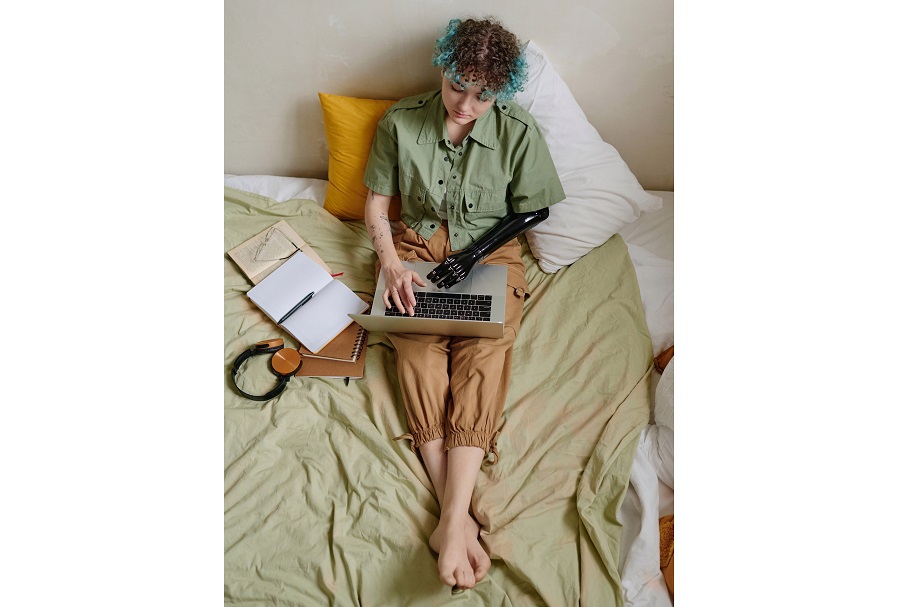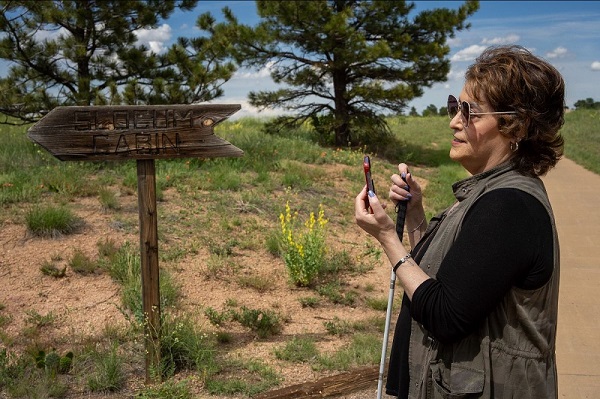State of Colorado Accessibility Newsletter - June 2024

Accessibility News
What To Do By July 1, 2024
By Laurie Kubitz, (she/her), Senior Accessibility Consultant
Time flies when you’re having fun preparing for compliance with technology accessibility and the July 1 deadline is fast approaching! As a reminder, we’re sharing some guidance for successfully meeting the deadline for complying with either the OIT rules or HB24-1454. Keep in mind, it’s important to confirm with your government entity’s legal advisor to determine the path that is best suited for your organization.
Compliance with the rules
A public entity may be considered in compliance with the technology accessibility rules if they:
- Provide reasonable accommodations or modifications.
- Have a published accessibility statement.
- Can provide evidence of making good faith progress on their plan to remove accessibility barriers.
The example evidence of an accessibility plan shows how a state or local government entity might provide evidence of making good faith progress on their plan to remove accessibility barriers. The plan is not required to be submitted or posted to the public.
Compliance with HB24-1454
A government entity that is not able to meet the steps to comply with the OIT rules by July 1, 2024 may instead pursue compliance with the requirements of HB24-1454 through July 1, 2025. On July 1, 2025 all government entities must comply with the OIT rules.
Should an individual with a disability that is subject to discrimination bring a civil action against the Colorado government entity, that entity may be immune from liability through July 1, 2025 for failure to comply with the OIT rules if they meet the following three criteria by July 1, 2024:
- Make good faith efforts toward resolution of a complaint of noncompliance.
- Create a clear, easy-to-find process that is prominently displayed on all front-facing web pages for requesting redress for inaccessible digital products, including contact options that are not dependent on web access.
- Create and post on front-facing web pages a progress-to-date report that is updated quarterly and demonstrates concrete and specific efforts toward compliance with the OIT rules.
The example evidence of an accessibility plan shows how a state or local government entity might provide a progress-to-date report that demonstrates efforts towards compliance with the OIT rules. The progress-to-date report is required to be posted to the public and updated quarterly.
You may be starting to see the pattern! No matter how you slice it, if you can make it easy to request accommodations, with an easy-to-find statement with a contact, and are able to prove that you have a sustainable plan for operationalizing accessibility to remove accessibility barriers, you can feel confident and proud on July 1 of a job well done.
Title II Digital Accessibility Changes
By Alice Huyler (she/her), Senior Policy Advisor, OIT Rulemaking
The federal Department of Justice published new rules in April describing digital accessibility requirements for state and local government entities, revising Title II of the Americans with Disabilities Act (ADA). Under the new rules, web content and mobile apps provided by state and local government entities will need to meet the Web Content Accessibility Guidelines (WCAG) Version 2.1, Level AA, which is the same technical standard adopted by the Colorado rules.
Compliance expectations for these new federal rules will go into effect in April 2026 for entities that have a population of 50,000 or more, and in April 2027 for special districts and entities that have a smaller population.
While these new federal rules are similar to Colorado’s rules, OIT and the Attorney General’s Office are exploring them to determine whether Colorado will need to make any adjustments in order to align before the 2026 initial compliance date. Sign up if you would like to receive direct notifications about digital accessibility rulemaking in Colorado.
New and Improved! Digital Accessibility Workshop
By Kate Miller (she/her), TAP Accessibility Consultant
The Office of Information Technology’s (OIT) Technology Accessibility Program (TAP) team soft-launched the Empathy Lab in November of 2023, part of which included an experiential learning site. The site offers a fun and interactive way to discover what people with certain disabilities - including dyslexia and color blindness - experience when websites are not accessible. It's now time to implement some changes, including a new website name.
On June 10, the Digital Accessibility Workshop officially relaunched with several enhancements in place. Since the initial launch, the TAP team gathered feedback and incorporated those changes improving the Workshop user experience.
Updates this month include:
- Refreshed and added exercises covering eight different topics, including a new multimedia topic with two new exercises, new resources for vision simulators and an improved dyslexia simulator.
- Rebranded topics that tie to the Web Content Accessibility Guidelines (WCAG) checkpoints and POUR principles: perceivable, operable, understandable and robust.
- Added Lived Experiences showcase featuring stories from Community Steering Committee (CSC) members.
- Improved plain language on each page.
- Opened the site to the public.
- Launched more of an at-your-own pace approach with less time commitment required by visitors.
- Coming soon, the “Centering Empathy: Stories from Coloradans with diverse lived experiences” video.

Chelsea's Corner
How to Host a Successful Screen Reader Demo
By Chelsea Cook (she/her), TAP Accessibility Consultant
Demonstrations using screen reader technology can have many purposes. They can be used for empathy, awareness, to demonstrate if something is going wrong with a website or application or to report on progress made in remediating that site or application. I have conducted multiple demos for the state, and here are some tips that will make that talking robot voice more personable.
- If possible, have a native user do the demo. Native users are people, often with disabilities, who rely on this technology every day. They will know the tricks to perform when responses from the software get hairy, or they will know how to make the screen reader say what is on the screen when the element they are on is not obvious. Screen readers are complex applications, so less experienced users may not know all the powerful tools that they contain.
- If the person conducting the demo is exclusively a screen reader user (does not have usable vision to get additional information), pair them with a sighted teammate who can back them up and describe what is happening on the screen. This can be useful if the screen reader doesn't catch something or if weird behaviors start to occur. It also gives context and makes the screen reader user feel more reassured if their technology starts behaving strangely. It makes them feel less like they've been thrown into the deep end.
- Practice, practice, practice! Do a dress rehearsal with the team of the pages or screens that will be demoed. This will ensure consistency for the demo, and will give the user more confidence if this isn't a page they are already familiar with. To prepare for any strange behavior by the product being demoed, build in double the demo time for this dry run.
- On demo day, slow the screen reader down or have a voice profile created specifically for demos. I found this helpful because it meant that others could understand what was being spoken, and I didn't have to mess up my personal settings too much. Every blind user is different: even I have to sometimes ask my friends and colleagues for slower speech!
- Prepare for things to go wrong. It will be okay. If things work differently or are taking longer than in the rehearsal, this can just show that technology can do unexpected things. Breathe and realize that you are still showing the world what it is like to use this software on a daily basis.
Accessibility and You
Partnering with Google on Accessibility
By Theresa Montano, Senior Solutions Architect of Accessibility
Did you know that OIT has worked closely with Google on accessibility since 2018! The partnership was created to provide training to state employees using assistive technology and to work directly with a dedicated Google team to address accessibility issues.
From that work, the need for a dedicated Google resource to directly train and assist state employees emerged. This training was essential to our state employee screen reader users as Google was a vastly different product from the previous solutions. TAP then moved to engage the support of Techy Joe's Computer Solutions to assist in Google support and training for all state employees using assistive technology. The partnership Techy Joe’s has with Google and the state allows employees to gain the assistance they need while also addressing Google accessibility issues and logging accessibility trouble tickets with the Google team.
Once a month, TAP and the state’s Technical Accessibility Advisory Board (TAAB) meet with Google’s accessibility team to receive status updates on bug fixes, new or updated screen reader functionality, and enhancement rollout information. Some key successes that have come out of this partnership include ongoing work in Google Drive using the JAWS cursor and virtual cursor, Google Meet improvements and the improvement of first letter navigation.
TAP has helped identify and address over 100 trouble tickets with Google resolving more than half of them so far. The Google accessibility relationship has been nurtured by OIT as a valuable resource to provide equitable access to our state employees. If you have questions or need to log a Google accessibility issue, email theresa.montano@state.co.us.
Accessibility in the News!
Aira Expands to Colorado’s State Parks
As we continue to work towards a Colorado for All, we’re making it easier for people who are blind or have low vision to explore our state parks.
In 2023, OIT and the Governor’s Office partnered with Aira to connect those who are blind or have low vision with a live visual assistant when navigating state-operated buildings and digital services. That service has now been expanded to all 42 state parks, providing access to visual information, such as signs, kiosks, buildings and more. This video demonstrates how the TAP team’s own Theresa Montano and Chelsea Cook use Aira to explore Chatfield State Park.
Since last year, more than 2,000 people have been using the Aira Explorer mobile application on their smartphones to navigate the Colorado State Capitol and other state buildings, college campuses, and state websites and applications. The 24/7 human-to-human service is free for up to 30 minutes per session.
Read more about using Aira in Colorado’s great outdoors.

Frequently Asked Questions
Who Do We Submit Our Accessibility Plan To?
Public entities do not need to submit planning or progress reports to OIT or another external authority. If a civil action were pursued against your organization, the court would determine whether you are in compliance with the rules and statute.
To comply with the OIT Rules Establishing Technology Accessibility Standards, you will maintain your plan in your internal files for your records and be prepared to provide evidence of making progress on that plan on request. The rules suggest but do not require annual status updates to the plan.
To comply with the Grace Period Bill, HB24-1454, you will post on your website a progress report demonstrating the steps that you are taking to come into compliance with the OIT rules, and update that quarterly. Only the Grace Period Bill requires a progress-to-date report with quarterly updates, not the rules. There is no information in the bill about when to complete quarterly updates or any specified format.
You may use the Example Evidence of an Accessibility Plan for either the rules accessibility plan or grace period progress report.
Finally, this is a time to reconnect to your commitment to ensuring full accessibility for individuals with disabilities to state and local government digital services. Applying the rules, having a plan, and infusing accessibility into your daily work will set you up for sustaining digital accessibility beyond July 1.
Notable & Quotable
“Nobody would publish a document with grammar and spelling errors. We do spell checks and grammar checks, so why don't we do this for accessibility? This is how fundamental this work is.”
- Anonymous
